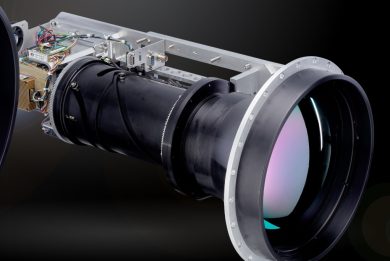SCD of Israel introduces new technology Mini Blackbird 1280 HFM sensor
The Israeli company unveils its new Mini Blackbird 1280 HFM that is capable to operate in the 3.6-4.9 µm spectral band
Semi Conductor Devices (SCD) of Israel is one of the key players in the infrared sensors world, with a complete portfolio of cooled and uncooled detectors based on a variety of sensing materials such as Indium-Antimonide (InSb), Mercury-Cadmium-Telluride (MCT), Indium-Gallium-Arsenide (InGaAs), Type 2 Superlattice (T2SL) andVanadium Oxide (Vox). In the Medium Wave Infrared (MWIR) band one of its best sellers is the Mini Blackbird SXGA with a 1280×1024 pixels matrix of XBn photodetectors with a 10 µm pitch. A High-Operating-Temperature (HOT) sensor, it operates at 150 °K which are ensured by a low SWaP Stirling cooler. The whole system weighs 350 grams and at ambient temperature has a power consumption of 5 W, equally split between the cooler and proximity electronics. The focal plane array spectral range goes from 3.6 to 4.2 µm.
To further improve its offer SCD decided to develop a new sensor, with similar size and weight, but covering the full MWIR spectral, the new sensor operating in the 3.6 – 4.9 µm spectral band, which means covering a wider band hence getting more information when observing a scene through a thermal imager. The new sensor is known as Mini Blackbird 1280 HFM, the final acronym standing for HOT Full Midwave. This technology allows obtaining the sensitivity in the wider band, but nothing comes at no expense; while remaining in the HOT sensor category, its operating temperature is nonetheless lower compared to that of the aforementioned Mini Blackbird SXGA, 120 °K versus 150 °K. The new SCD product is coupled to a split linear cooler, the overall power consumption being around 10 W. It is to note that sensors covering the same full bandwidth already exist, however they operate at 77 °K which means their cooling system has to be more powerful, hence a much higher power consumption. According to Shay Fishbein, Vice President of Business Development & Marketing at SCD, compared to those sensors with the same 1280 x 1024 pixels, the Mini Blackbird 1280 HFM weight 60% less and its power consumption is 65% lower.
SCD considers its new sensor will become the core of many tactical payloads for UAVs, drones, Search & Rescue helicopters, as well as for ground surveillance, persistent surveillance, long/medium range surveillance and targeting, as well as for handheld systems.
One field in which the Mini Blackbird 1280 HFM might be of key importance is the C-UAS domain, as when looking a relatively uniform scenario such as the sky the wider band will allow acquiring many more information, Shai Fishbein explains. He also states that beside higher performances, the new product also features a higher Mean Time Between Failures (MTBF), an important parameter for those systems that work 24/7.
Currently the Mini Blackbird 1280 HFM is in the final development stage, SCD having already delivered some prototypes to its main customers. The company plans to launch full production by year end, and looks at North America, Far East Asia, Europe and obviously Israel as the most promising markets.
The new sensor does not represent the finish line for SCD, improvements being constantly sought after in order to improve performances providing military and law enforcement agencies an edge over their opponents. The HOT Full Midwave technology will soon migrate on other very high-resolution sensors, but this will happen later this year.
Photo courtesy SCD




